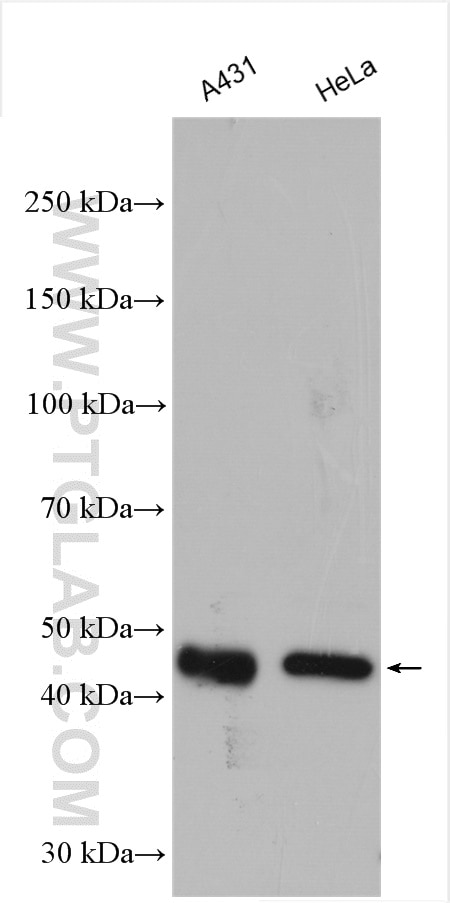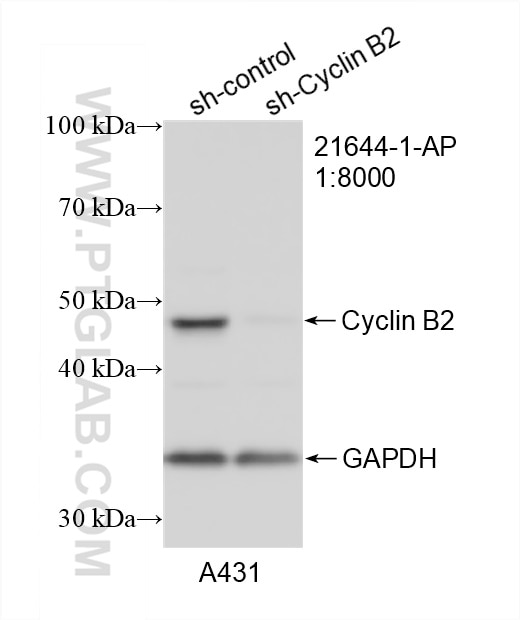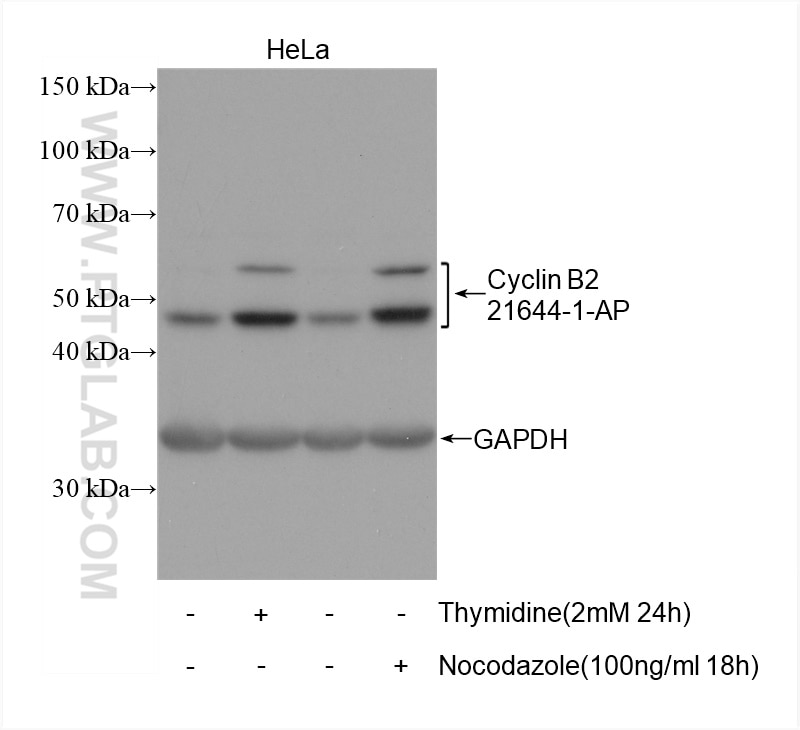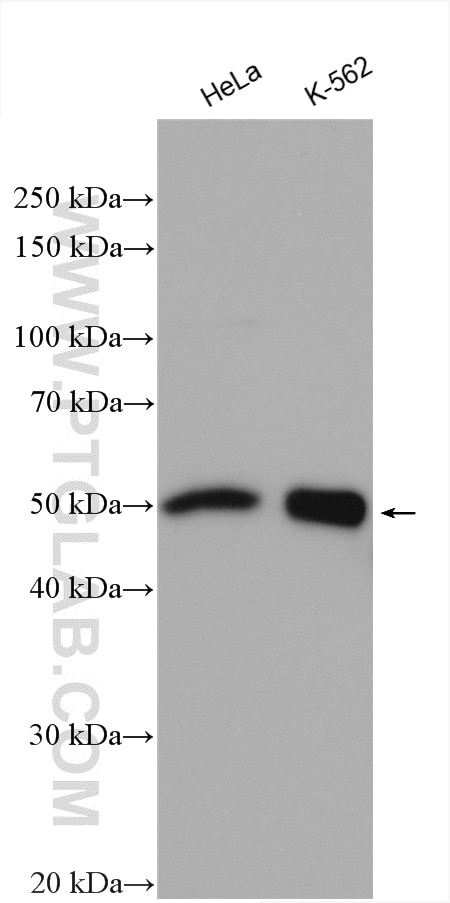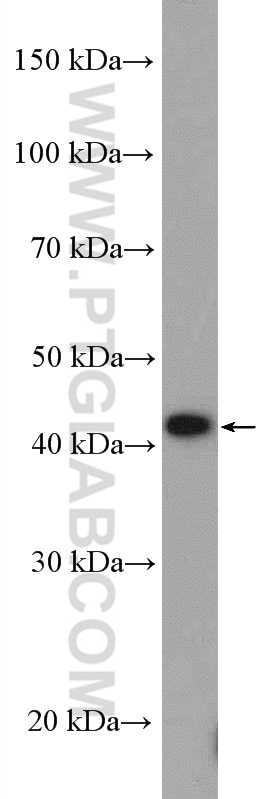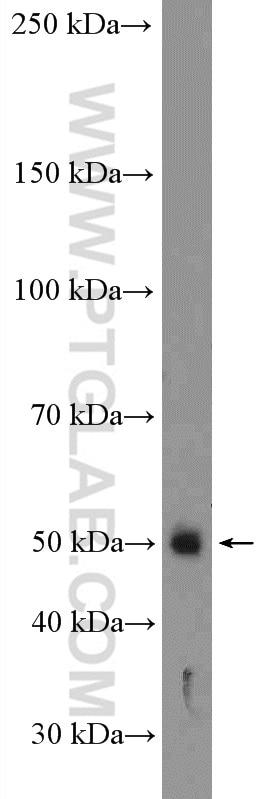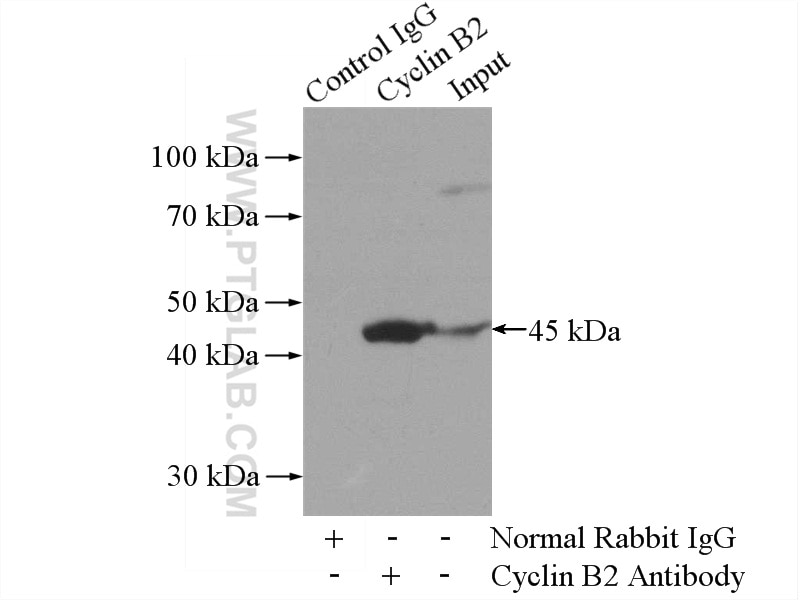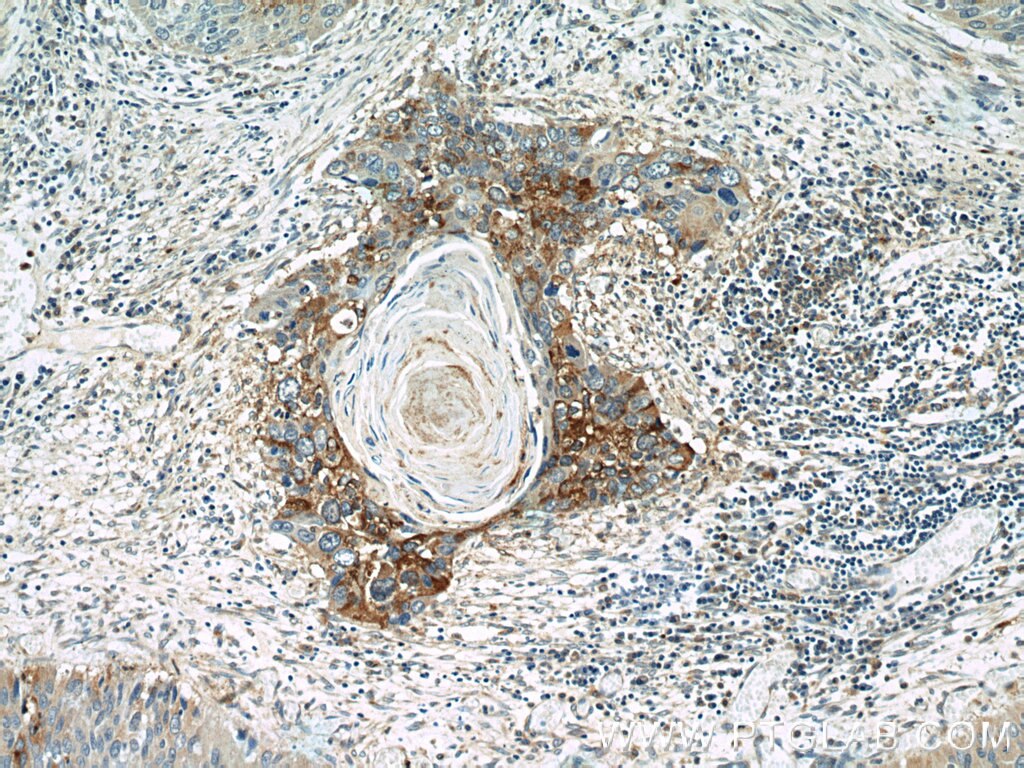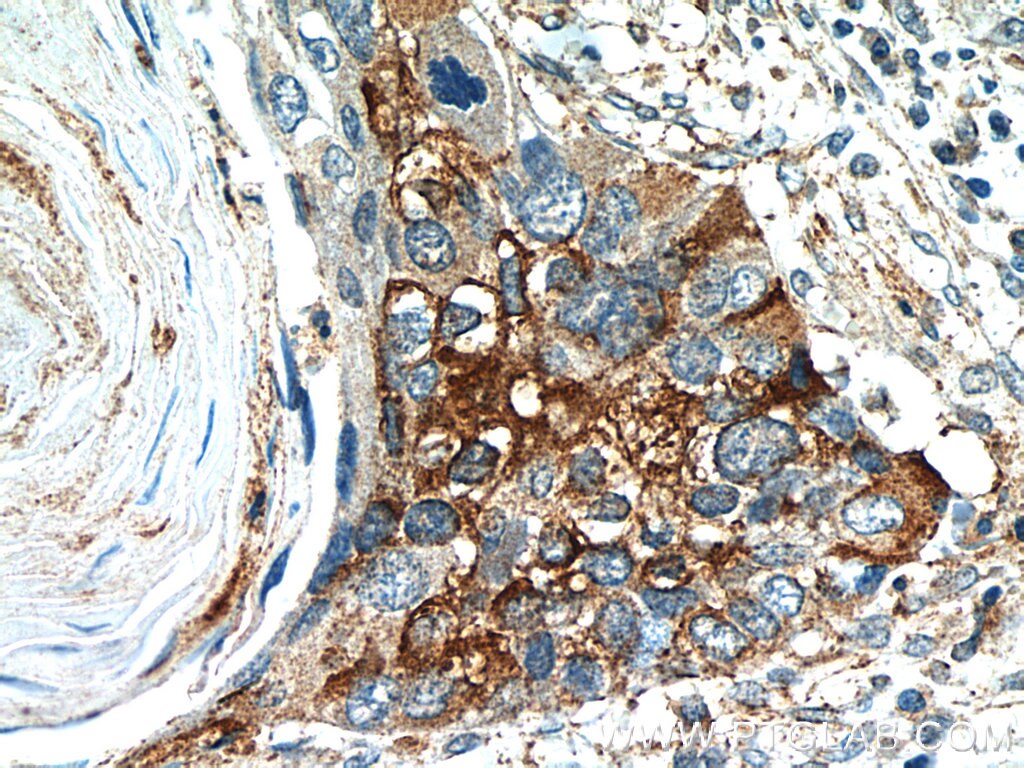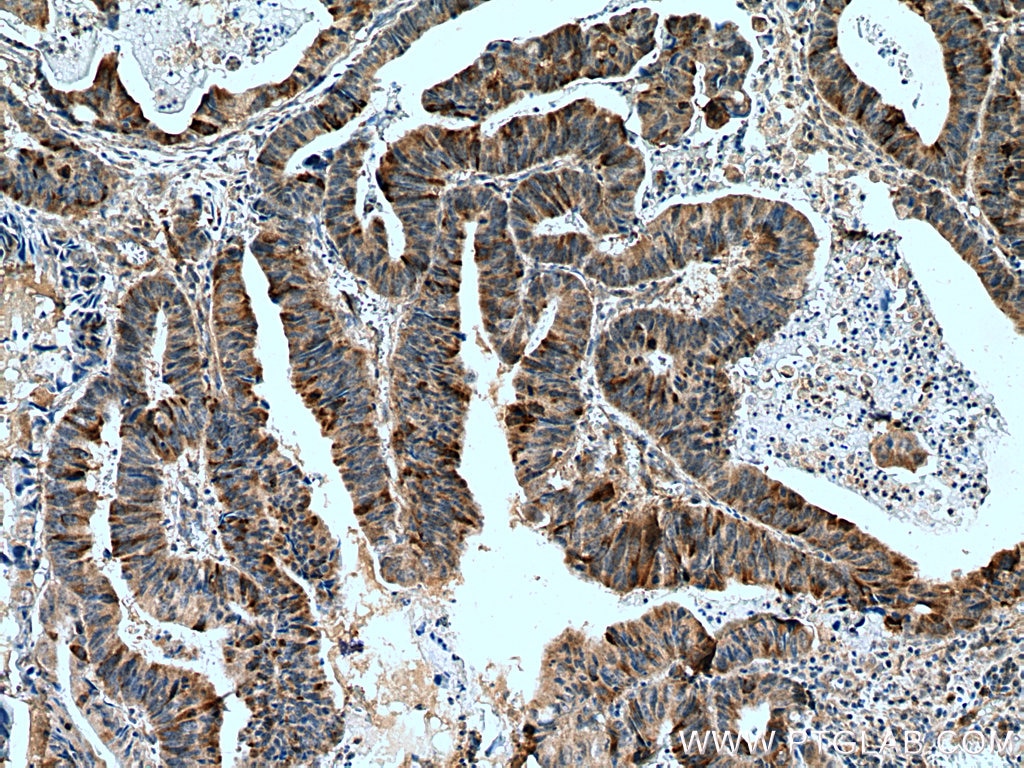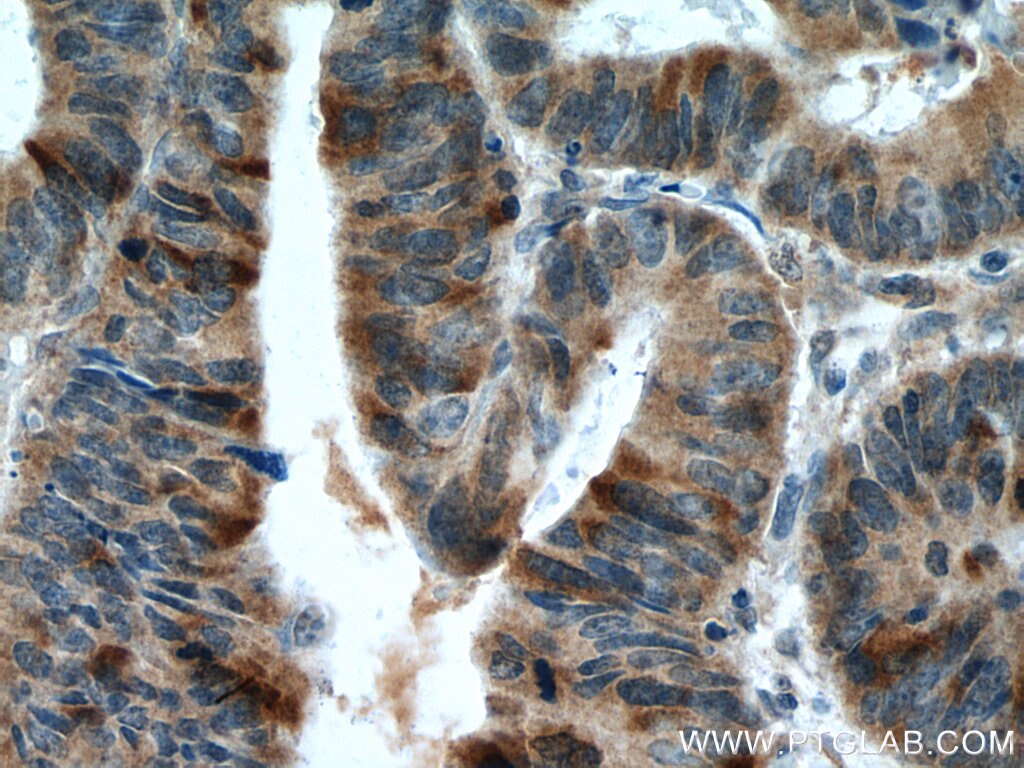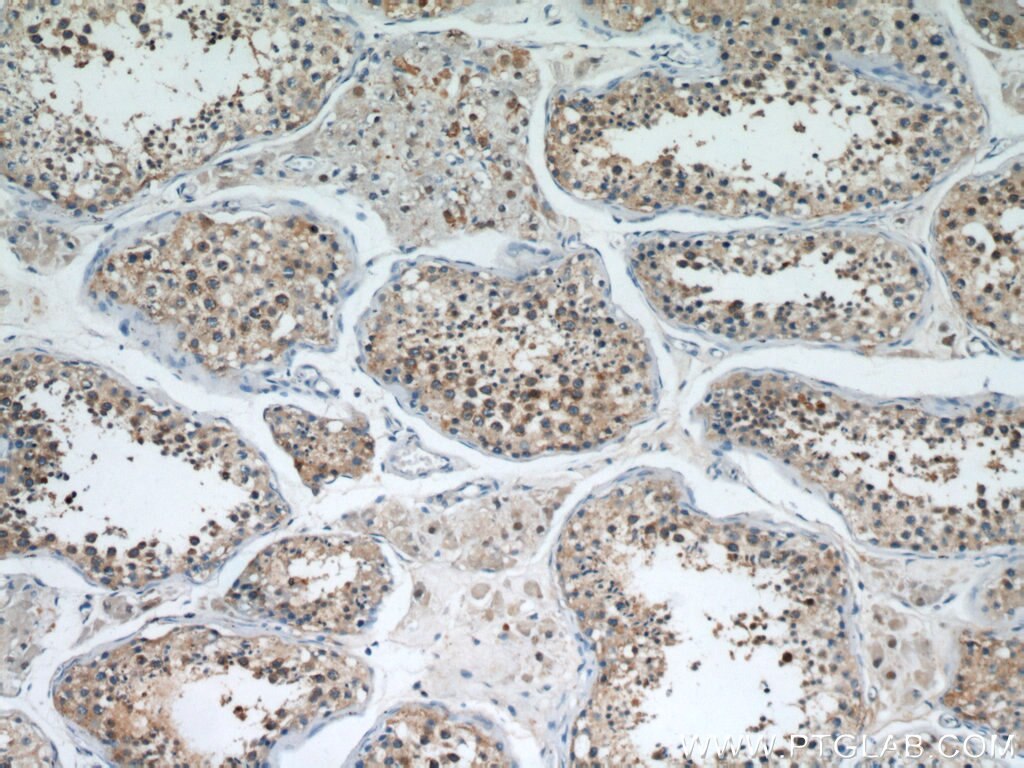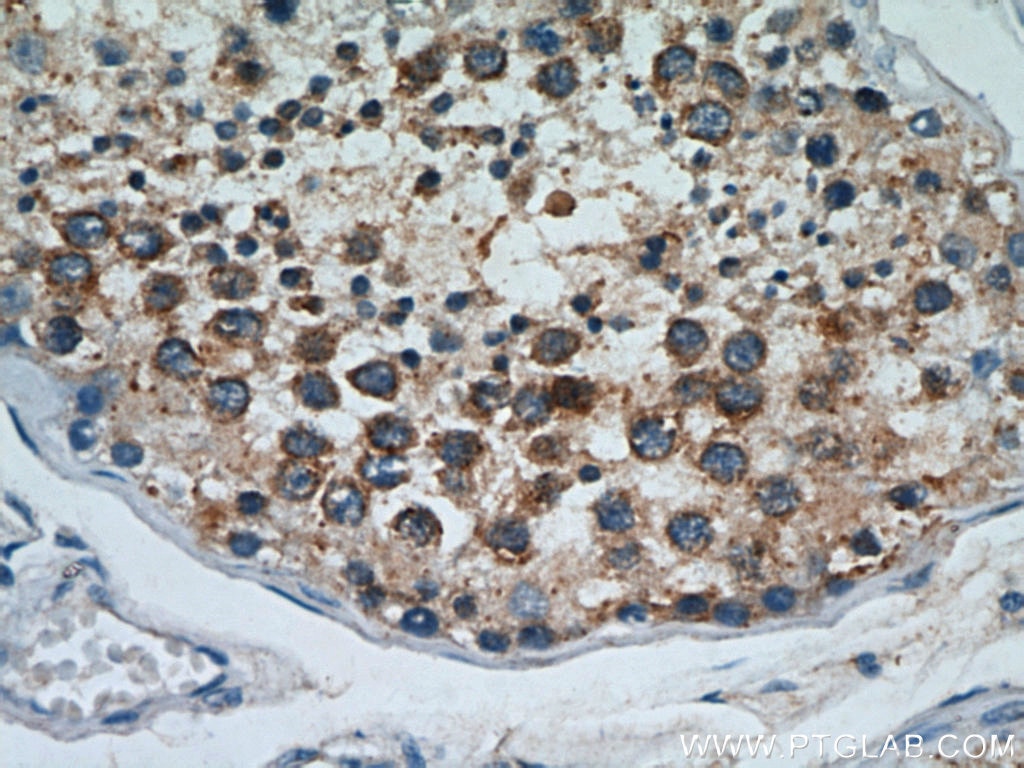Tested Applications
| Positive WB detected in | A431 cells, DU 145 cells, rat testis tissue, HeLa cells, K-562 cells |
| Positive IP detected in | A431 cells |
| Positive IHC detected in | human cervical cancer tissue, human testis tissue, human colon cancer tissue Note: suggested antigen retrieval with TE buffer pH 9.0; (*) Alternatively, antigen retrieval may be performed with citrate buffer pH 6.0 |
Recommended dilution
| Application | Dilution |
|---|---|
| Western Blot (WB) | WB : 1:2000-1:12000 |
| Immunoprecipitation (IP) | IP : 0.5-4.0 ug for 1.0-3.0 mg of total protein lysate |
| Immunohistochemistry (IHC) | IHC : 1:20-1:200 |
| It is recommended that this reagent should be titrated in each testing system to obtain optimal results. | |
| Sample-dependent, Check data in validation data gallery. | |
Published Applications
| KD/KO | See 1 publications below |
| WB | See 27 publications below |
| IHC | See 7 publications below |
| IP | See 1 publications below |
Product Information
21644-1-AP targets Cyclin B2 in WB, IHC, IP, ELISA applications and shows reactivity with human, mouse, rat samples.
| Tested Reactivity | human, mouse, rat |
| Cited Reactivity | human, mouse |
| Host / Isotype | Rabbit / IgG |
| Class | Polyclonal |
| Type | Antibody |
| Immunogen |
CatNo: Ag16329 Product name: Recombinant human CCNB2 protein Source: e coli.-derived, PGEX-4T Tag: GST Domain: 1-243 aa of BC105086 Sequence: MALLRRPTVSSDLENIDTGVNSKVKSHVTIRRTVLEEIGNRVTTRAAQVAKKAQNTKVPVQPTKTTNVNKQLKPTASVKPVQMEKLAPKGPSPTPEDVSMKEENLCQAFSDALLCKIEDIDNEDWENPQLCSDYVKDIYQYLRQLEVLQSINPHFLDGRDINGRMRAILVDWLVQVHSKFRLLQETLYMCVGIMDRFLQVQPVSRKKLQLVGITALLLASKYEEMFSPNIEDFVYITDNAYTS Predict reactive species |
| Full Name | cyclin B2 |
| Calculated Molecular Weight | 398 aa, 45 kDa |
| Observed Molecular Weight | 51 kDa |
| GenBank Accession Number | BC105086 |
| Gene Symbol | Cyclin B2 |
| Gene ID (NCBI) | 9133 |
| RRID | AB_10755304 |
| Conjugate | Unconjugated |
| Form | Liquid |
| Purification Method | Antigen affinity purification |
| UNIPROT ID | O95067 |
| Storage Buffer | PBS with 0.02% sodium azide and 50% glycerol, pH 7.3. |
| Storage Conditions | Store at -20°C. Stable for one year after shipment. Aliquoting is unnecessary for -20oC storage. 20ul sizes contain 0.1% BSA. |
Background Information
Cyclin B2 (CCNB2) is a member of cyclin family proteins, which regulate the activities of cyclin dependent kinases (CDKs) and different cyclins function spatially and temporally in specific phases of the cell cycle. Cyclin B2 serves a key role in progression of G2/M transition. Cyclin B2 has been found to be up-regulated in a variety of human cancers, such as adrenocortical carcinoma, breast carcinoma, colorectal adenocarcinoma, pituitary adenoma and gastric cancer. The aberrant expression of Cyclin B2 deregulates spindle checkpoints in the cell cycle and results in chromosomal instability (CIN), one of the signature phenotypes of most cancers. Moreover, serum circulating Cyclin B2 mRNA expression has been found increased in cancer patients and associated with cancer stage and metastasis status. Cyclin B2 can be detected double bands (PMID:1651338).
Protocols
| Product Specific Protocols | |
|---|---|
| IHC protocol for Cyclin B2 antibody 21644-1-AP | Download protocol |
| IP protocol for Cyclin B2 antibody 21644-1-AP | Download protocol |
| WB protocol for Cyclin B2 antibody 21644-1-AP | Download protocol |
| Standard Protocols | |
|---|---|
| Click here to view our Standard Protocols |
Publications
| Species | Application | Title |
|---|---|---|
Phytomedicine Ganoderma lucidum polysaccharide inhibits HSC activation and liver fibrosis via targeting inflammation, apoptosis, cell cycle, and ECM-receptor interaction mediated by TGF-β/Smad signaling | ||
EMBO Rep Mad2 promotes Cyclin B2 recruitment to the kinetochore for guiding accurate mitotic checkpoint.
| ||
Oxid Med Cell Longev Therapy-resistant and -sensitive lncRNAs, SNHG1 and UBL7-AS1 promote glioblastoma cell proliferation. | ||
Elife Elevated FBXO45 promotes liver tumorigenesis through enhancing IGF2BP1 ubiquitination and subsequent PLK1 upregulation. | ||
Oncotarget The synthetic antihyperlipidemic drug potassium piperate selectively kills breast cancer cells through inhibiting G1-S-phase transition and inducing apoptosis. | ||
Ecotoxicol Environ Saf Disruption of mitochondrial redox homeostasis as a mechanism of antimony-induced reactive oxygen species and cytotoxicity. |

